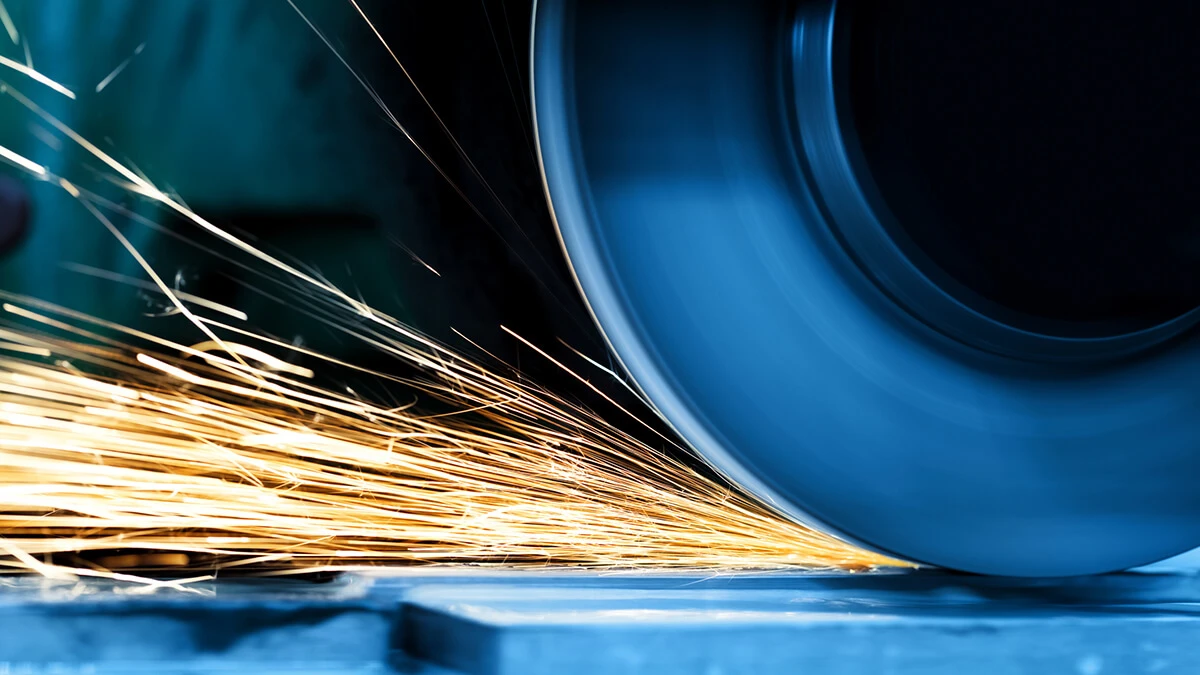
What type of motor is in a grinding machine?
AC induction motors are the most common motor type used in modern bench grinders, although synchronous AC motors are sometimes used, depending on your specific needs.
Bench grinders are stationary machines widely employed for grinding, polishing, deburring, and sharpening tools. A crucial component of these grinders is the motor, which drives the grinding wheels and determines the performance, efficiency, and safety of the machine. In this comprehensive article, we will delve into the various types of motors found in bench grinders, examining their characteristics, advantages, and suitability for different applications. Understanding the motor options available will assist you in making an informed decision when selecting a bench grinder for your specific needs.

I. AC Induction Motor
The most prevalent motor type used in modern bench grinders is the AC induction motor. These motors consist of a stator and a rotor, both made of wound copper wire, with an air gap separating them. When AC power is supplied, it creates a rotating magnetic field in the stator, inducing an electric current in the rotor. This current generates torque, enabling the rotor to rotate and drive the grinding wheels. AC induction motors are favored for their reliability, simplicity, and cost-effectiveness. They are well-suited for most bench grinding applications.
Construction and Operation
The stator of an AC induction motor comprises copper windings arranged in a laminated core. This stator winding is connected to the power source, and when energized, it produces a rotating magnetic field. The rotor consists of copper windings, also in a laminated core, but it does not receive a direct electrical connection. Instead, the rotating magnetic field in the stator induces an electric current in the rotor windings, creating the torque necessary for rotation.
Advantages
- Simplicity: AC induction motors have a straightforward construction, making them easy to manufacture and maintain.
- Reliability: They are known for their robustness and durability, with minimal wear and tear over extended periods of operation.
- Cost-effectiveness: AC induction motors are relatively inexpensive compared to other motor types, making them widely accessible.
II. AC Synchronous Motor
In heavy-duty bench grinders, AC synchronous motors are occasionally utilized. These motors share similarities with AC induction motors but feature a different rotor design for superior speed control and torque characteristics.
A. Construction and Operation
AC synchronous motors have a stator with wound copper windings, similar to AC induction motors. However, the rotor can either incorporate permanent magnets or have DC-powered windings. This design allows the rotor to synchronize with the rotating magnetic field generated by the stator. By maintaining synchronization, the motor achieves precise speed control and exhibits stable performance even during load changes.
B. Advantages
- Speed Control: AC synchronous motors offer precise speed regulation, making them suitable for applications that demand specific grinding speeds.
- High Starting Torque: These motors provide substantial torque during startup, ensuring efficient grinding operations from the beginning.
- Load Stability: AC synchronous motors exhibit excellent speed regulation and stability when subjected to varying loads, resulting in consistent performance.
III. DC Motors (Previous Usage)
In the past, bench grinders occasionally employed direct current (DC) motors. However, due to their higher cost, complex control requirements, and specialized applications, DC motors are less commonly found in modern bench grinders.
A. Construction and Operation
DC Motors utilize brushes and commutators to convert AC power into DC and generate the rotating magnetic field required for operation. The commutator, a rotating switch, periodically reverses the current flow in the rotor windings, ensuring constant rotation.
B. Advantages
- Speed Control: DC motors offer precise speed adjustment, allowing for fine-tuning of grinding operations.
- Torque Characteristics: These motors provide high torque at low speeds, making them suitable for heavy-duty applications.
- Specialized Applications: DC motors find use in specialized bench grinding tasks that require specific speed ranges or torque profiles.
Conclusion
Choosing the right motor for your bench grinder is essential to ensure optimal performance, efficiency, and safety. AC induction motors are the most common choice for general bench grinding applications due to their reliability, simplicity, and cost-effectiveness. They offer consistent operation in various workshop environments. However, for heavy-duty applications that demand precise speed control and high starting torque, AC synchronous motors can provide superior performance. While less common in modern bench grinders, DC motors are still found in specialized applications that require specific speed or torque characteristics. By understanding the characteristics and advantages of each motor type, you can make a decision when selecting a bench grinder that meets your specific needs.



Leave a Comment